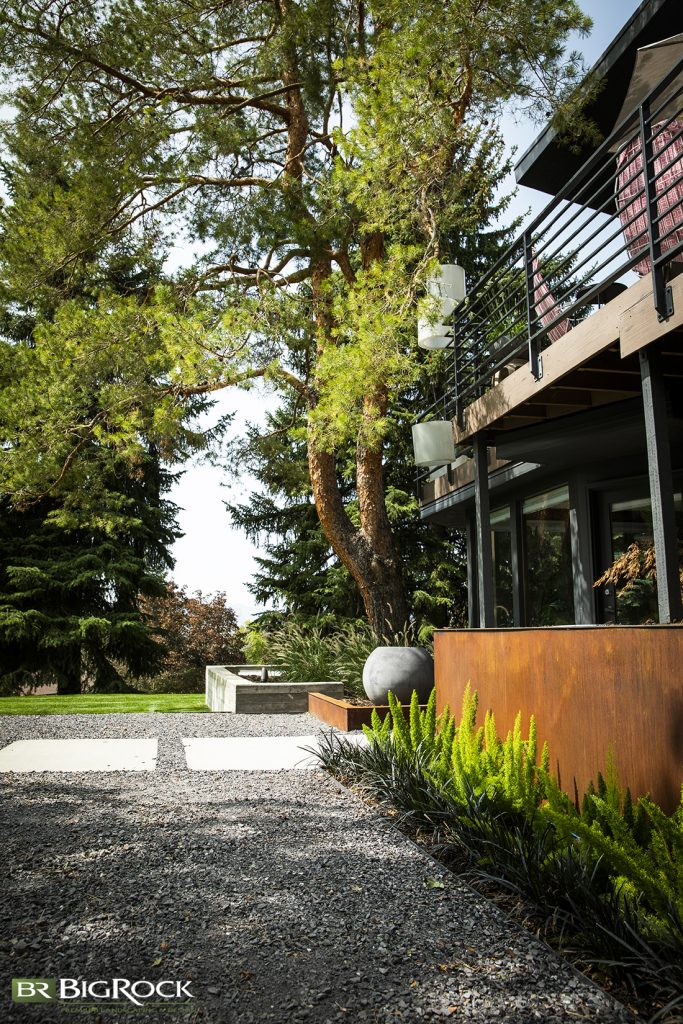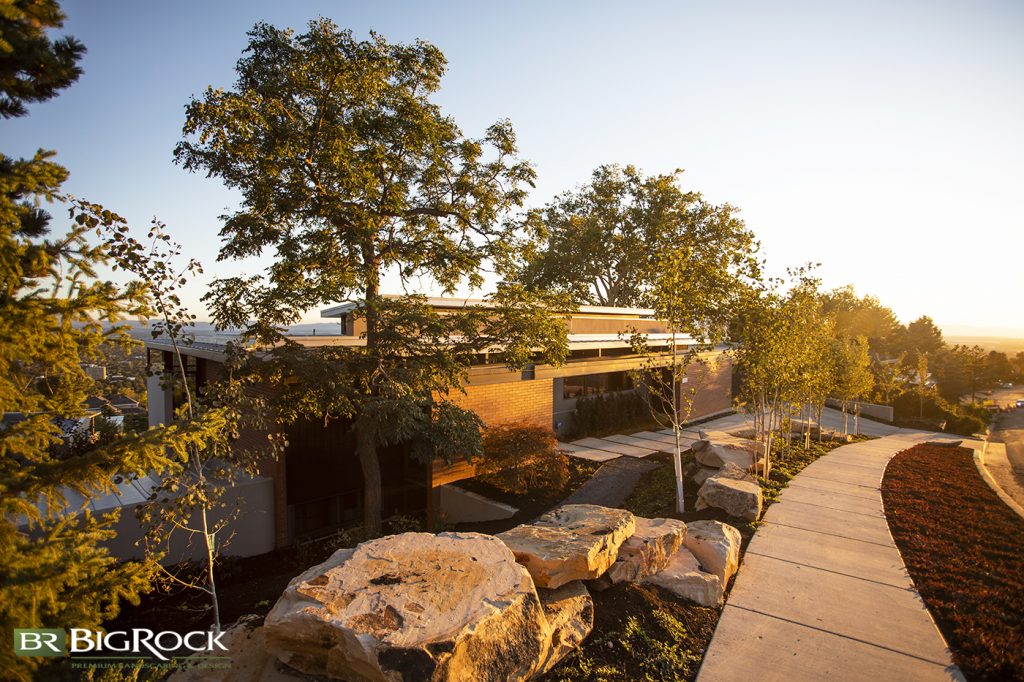
Don’t Panic! Here’s How To Prepare Your Yard For Drought
Sometimes you read about places with lush, rolling green hills as far as the eye can see. Reality check: Utah is not that place. Between the mountains and the developed green spaces, it’s easy to forget that Utah is actually a desert. As such, it’s prone to dry spells and periods of drought. When there is a water shortage, it’s important to be ready for it. You can start by using these tips for preparing your yard for drought. With a little forethought, you won’t need to panic because you’ll know what to do.
Drought Preparation 101
Caring for lawns can be a challenge in the best of times, but it gets a little more tricky when water is in short supply. Ideally, preparing your yard for drought starts long before a drought hits, but if you’re currently locked in a staring contest with a hot, dry summer, it’s not too late to help your yard.
LEARN: Xeriscaping Ideas For Your Utah Home
A good place to start preparing a lawn for drought is by learning how much water your lawn actually needs under normal conditions, because you may be currently over watering it. As a rule of thumb, lawns need ½ inch of water two or three times a week when the temperatures are 70-80 degrees. When the heat hits 90-100 degrees, you should be giving your lawn a ½ inch to ¾ inch of water three to four times a week. After adjusting how much and how often you water your yard, take a look at your sprinkler or irrigation system to make sure they are up to date and in good repair.
While you’re looking at your yard, consider whether or not it meets your needs, and if there are other ways you can conserve water. Perhaps that means adding some xeriscaping or hardscaping, ripping out parking strips, using more native plants, collecting rainwater, or installing ET (evapotranspiration) sensors. These are all great ways to prepare for a drought, but they are also solid practices even when water usage isn’t an issue.

Why You Need To Collect Rainwater
Collecting rainwater may seem like the stuff of prairie lands and pioneers, but it’s actually become a popular trend these days. While you may not drink, bathe, or cook with this water, like they did in the olden days, you can use it for watering plants during drought. Collecting rainwater is a great (and FREE) way to give your plants, trees, and shrubs a little extra love in the midst of a water shortage. It can also save you money on your water bill, even when water is plentiful. Rainwater can even be better for your plants than the water from your tap or hose, because it hasn’t been treated with chemicals and has fewer minerals to cause buildup that can be harmful to leaves.
How do you collect rainwater? It’s as easy as setting up a rain barrel or two to catch the water next time it rains. You can get specialized water collection materials, or just use buckets, barrels, or other containers you have on hand when a rainstorm is headed your way. Positioning collection basins under gutter spouts is an effective way to capture the most water.
DISCOVER: Our Xeriscaping Portfolio
Preparing Your Lawn For A Drought
When you’re preparing your yard for drought, these easy tips will help you keep your lawn looking as good as possible in harsh climate conditions.
Raise Your Mower Blade To 2.5-4 Inches
Shorter grass may have a better aesthetic, but taller grass does a better job of keeping the soil cool and locking in moisture.
Maintain Lawn Equipment
You don’t want your lawn mower blade to hack away at your grass. This damages the greenery and causes it to put precious water and other resources towards repairing itself. Sharp, well-maintained mower blades will make clean cuts and lessen the damage done to grass.
Don’t Skip the Fertilizer
Some people will recommend that you skip fertilizing during a drought, but we think that is a mistake. Your plants and trees still need nutrients, so feed your plants with high-nitrogen fertilizer during a drought.
Use Drought Tolerant Grass Seed
The type of grass seed you use makes a big difference. Bermuda grass, Kentucky Bluegrass, Zoysia, and Buffalo Grass are all hearty varieties that are drought tolerant and can handle Utah’s tough climate.
Only Water As Needed
It can be tricky to get a handle on watering a lawn during a drought. Grass will start to turn brown after two or three weeks without water. You want to try to avoid getting to that point, but you can certainly cut back your watering schedule and keep it hanging on. Find out how much water your lawn needs in ideal conditions, and scale it back from that point.
Check Your Sprinkler System
If your sprinkler system has leaks, broken sprinkler heads, or is programmed incorrectly, you may be needlessly wasting water. Check your sprinklers to make sure they are in tip top condition and ready to do their job. Make sure you utilize different watering zones, as shady areas need less water than sunny areas. You can also fine tune your zones by using a variety of drip emitter heads–water can come out at different rates yet still be in the same zone.
Install An ET Sensor
Using a smart sprinkler equipped with an ET sensor can help you conserve water. Different ET (evapotranspiration) sensors gather information about the evaporation from the soil, transpiration by plant materials, as well as wind and rain forecasting from local weather sources to make irrigation run-time adjustments. Sprinkler systems fitted with ET sensors have been shown to reduce outdoor water use by up to 20 percent.
Come Up With A Watering Plan
If you’ve already determined how much water your grass needs in ideal conditions, then you’ll want to come up with a plan that scales things back to accommodate for drought conditions. Try watering in the early morning hours when it’s cooler. Watering deeply and infrequently is a fantastic way to accommodate drought conditions.
LEARN MORE: Your Utah Flooding Preparedness Checklist
Improve Your Soil Content
Sandy soil doesn’t hold water well, and clay soil does a poor job of absorbing water. The best soil has an equal mix of sand, clay, and silt, with some manure or compost thrown in the mixture. This type of soil retains the proper balance of holding water in while allowing for drainage.
Mulch Or Dethatch As Needed
Letting your grass clippings stay in your lawn can help keep the soil moist. However, there’s a fine balance, because if you accumulate too many clippings, it will act as a barrier and keep the water from being absorbed into the soil. If your grass accumulates more than a half an inch of grass clippings or other undecomposed material, then you may need to dethatch to keep the water flowing down to the root system.
Stay Off The Grass
Grass is for living and recreating on, but in times of drought, too much living and recreating can put a lot of stress on your lawn. Try to stay off the grass as much as possible to keep your grass healthy during a drought. That doesn’t mean you can NEVER step foot on it, but maybe keep the backyard block parties off your lawn every night.
READ MORE: Our Yard Checklist For A Drought

Preparing Your Plants And Shrubs For A Drought
As warm weather starts to set in, it’s time to start preparing shrubs for drought, as well as the other plants, trees, and flowers in your yard. While yards and gardens can be a great way to make your house look beautiful, it’s important to take the necessary steps to keep them healthy and thriving, even during a drought. Here are a few tips to help.
Water Directly
Using a traditional sprinkler system to water plants, shrubs, and trees can waste a lot of water. Opt instead for a drip irrigation system, or for watering your plants by hand and directing the water at the base of the plants. This will eliminate overspray and put the water right where it needs to be.
Collect Rainwater
Gathering rainwater can be a simple way to give your plants a little extra moisture. You don’t need a big or elaborate setup, and every extra drop can help your plants survive a water shortage.
Add Mulch
The humble wood chip is a great way to protect soil from erosion and harsh weather. It keeps the soil around your plants cool, and helps stop water from evaporating as quickly, so your plants have more time to drink up.
Limit Pruning
Pruning isn’t just about keeping things looking manicured, it’s also about stimulating growth. If you prune a lot, your plants will think it’s time to grow, and will focus their energy and precious water supply on that effort when they should be conserving it for their core functions.
RELATED: 5 Ways Landscaping Saves Your From Flooding
Add Hardscape And Xeriscaping
Hardscape structures and xeriscaping can be beautiful ways to add some interest and functionality to your outdoor space. Best of all, they don’t require water. Look for areas, like parking strips or flower beds, where it would make sense to add a water-friendly element. But don’t worry-if you’re in love with your yard as it is, we firmly believe you can keep it, even during a drought, if you are watering correctly.
Use Native Plants
Sometimes the secret to how to have a beautiful yard in a drought has everything to do with the type of plants you use. Native plants are used to the weather and water supply in the climate in which they live and will have a better chance of surviving harsh conditions.

Have More Drought Questions About Your Yard?
The important thing to remember about preparing your yard for drought conditions is that water shortages aren’t a cause for panic. Drought is something that happens in a desert landscape, and there are ways you can still have a thriving outdoor space, despite a restricted water supply. But you don’t have to do it alone.
Big Rock Landscaping is known as one of the best landscaping services in Utah because we understand the Utah climate and landscape. As a homeowner, maintaining your yard during a drought, or turning your yard into the outdoor space of your dreams can seem overwhelming. We have a proven process that allows us to work effectively and efficiently to bring your vision to life. At Big Rock Landscaping, we’re known for our quality work, innovative designs, and excellent customer service. Check out our variety of landscaping services, and see how we can help create an outdoor space you can enjoy this year and for many more summers to come.


Leave a Reply
You must be logged in to post a comment.